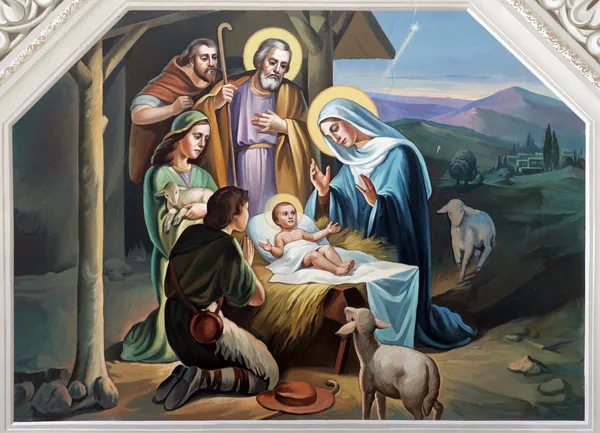
Christmas is one of the most beloved holidays celebrated worldwide, marking the birth of Jesus Christ and embodying themes of love, joy, and unity. As communities come together to celebrate, Christmas traditions and customs vary greatly across cultures, creating a rich tapestry of festive experiences. In this article, we will explore the history of Christmas, unique global traditions, the spirit of giving, the significance of decorations and food, and the emotional resonance of this cherished holiday.
1. The History of Christmas
Origins of Christmas
Christmas traces its roots back to the early Christian church, which commemorated the birth of Jesus Christ, believed to be the Son of God and the Savior of humanity. The precise date of Jesus’ birth is not mentioned in the Bible, but in the fourth century, Pope Julius I declared December 25th as the official date of Christmas, likely to coincide with existing pagan winter solstice festivals, such as Saturnalia in ancient Rome and Yule in Northern Europe.
The Birth of Jesus

The story of Jesus’ birth is one of humility and miraculous events, as described in the Gospels of Matthew and Luke. Mary, a young virgin, was visited by the Angel Gabriel, who announced that she would conceive a child by the Holy Spirit. Despite the potential for scandal, Mary accepted her role with grace, exemplifying faith and obedience.
Joseph, her betrothed, initially planned to divorce her quietly to protect her from public shame. However, an angel appeared to him in a dream, reassuring him that the child was indeed the Son of God. He took Mary and her unborn child into his home, providing them with protection and support.
As the time of Jesus’ birth approached, Mary and Joseph traveled to Bethlehem for a census ordered by Emperor Augustus. Upon their arrival, they found no room in the inn, leading them to take refuge in a stable. It was in this humble setting, among animals, that Jesus was born. Mary wrapped him in swaddling clothes and laid him in a manger.
The birth was announced to shepherds in the fields by angels, who proclaimed, “Glory to God in the highest, and on earth peace, goodwill toward men.” The shepherds visited the newborn, spreading the news of his miraculous birth, marking the beginning of the Christian tradition of celebrating Christmas.
From Pagan to Christian Festival
As Christianity spread throughout Europe, many of the customs associated with pagan winter solstice festivals were incorporated into Christmas celebrations. Yule logs, holly, and mistletoe became symbols of the season, blending the old with the new. The transformation of Christmas into a widely celebrated holiday took centuries, with variations in customs and traditions developing along the way.
2. Christmas Traditions Across Cultures
Global Traditions
Christmas customs vary widely around the world, reflecting local cultures and traditions. In Mexico, Las Posadas is a nine-day celebration reenacting Mary and Joseph’s search for lodging, culminating in a festive gathering with piñatas. In Germany, the Christkindlmarkt (Christmas market) is a beloved tradition where vendors sell handcrafted gifts and delicious foods.
The Philippines celebrates one of the longest Christmas seasons, starting as early as September, with colorful parols (star-shaped lanterns) illuminating homes and streets. In Ethiopia, Christmas is celebrated on January 7th, with religious services and traditional meals, often including injera and doro wat.
Western Christmas Traditions
In Western countries, the tradition of Christmas trees, adorned with lights and ornaments, has become a symbol of the holiday. Santa Claus, based on the historical figure St. Nicholas, embodies the spirit of giving, with children eagerly awaiting his arrival on Christmas Eve. Families come together to exchange gifts and enjoy festive meals, creating cherished memories.
3. The Spirit of Giving: Gifting and Charity
The Joy of Gifting
The tradition of exchanging gifts during Christmas has roots in the gifts presented to Jesus by the Wise Men: gold, frankincense, and myrrh. This practice reflects the spirit of generosity and love that characterizes the season. Gift-giving serves as an expression of affection and appreciation, whether through carefully chosen presents or heartfelt homemade items.
Charitable Acts
Christmas is also a time for giving back to those in need. Many people engage in charitable activities, such as donating to food banks, volunteering at shelters, or participating in toy drives. This emphasis on helping others reinforces the message of compassion and kindness central to the Christmas spirit.
4. Christmas Decorations and Their Significance
Christmas Trees

The Christmas tree tradition originated in Germany in the 16th century when Christians began decorating trees with candles to represent Christ as the light of the world. Today, families around the globe decorate their trees with lights, ornaments, and sentimental items, creating a centerpiece for holiday celebrations.
Symbols of the Season
Various decorations carry deep meanings, from wreaths and mistletoe to the Nativity scene. Wreaths symbolize eternity and the everlasting love of Christ, while mistletoe represents peace and goodwill. The Nativity scene, depicting the birth of Jesus, serves as a reminder of the holiday’s religious significance.
5. Christmas Foods and Feasts
Traditional Christmas Meals
Food plays a central role in Christmas celebrations, with families gathering to enjoy festive meals together. In the United States, roast turkey, stuffing, and cranberry sauce are popular. In the UK, a traditional Christmas dinner often includes roast goose or turkey, Brussels sprouts, and Christmas pudding.
Cultural Variations
Different cultures celebrate with unique dishes. In Italy, panettone, a sweet bread loaf, is a festive favorite. In Mexico, tamales are often served during Christmas celebrations, while in Poland, families enjoy a meatless Wigilia dinner on Christmas Eve, featuring 12 dishes representing the 12 apostles.
6. Modern-Day Christmas: Commercialization and Technology
The Commercial Side
In recent years, Christmas has evolved into a highly commercialized holiday. Retailers capitalize on the festive spirit, offering sales and promotions that begin as early as November. The rise of online shopping has transformed how people prepare for the holiday season, making it more accessible but also increasing pressure to spend.
Technology’s Influence
Technology has impacted the way families connect during Christmas. Virtual greetings through video calls and social media platforms allow loved ones separated by distance to share in the celebrations. Additionally, online shopping has made gift-giving more convenient, although it can lead to overspending and materialism.
7. The Emotional Significance of Christmas
Family and Togetherness
At its heart, Christmas is a time for family and togetherness. Many people travel long distances to reunite with loved ones, sharing laughter, stories, and creating lasting memories. The warmth of home, the scent of baking cookies, and the sound of carols evoke a sense of nostalgia and comfort.
Reflections and Hope
Christmas also serves as a time for reflection and hope. As the year comes to a close, individuals often take time to evaluate their lives, relationships, and aspirations. The holiday season encourages gratitude and optimism, reinforcing the belief in the possibility of new beginnings.
Conclusion
Christmas embodies the spirit of love, kindness, and unity, transcending cultural and geographical boundaries. As we celebrate this cherished holiday, we honor the birth of Jesus Christ and embrace the values that make Christmas special. The evolving nature of Christmas traditions and customs reflects the resilience and adaptability of the holiday, ensuring its relevance in modern society.
Leave a Reply